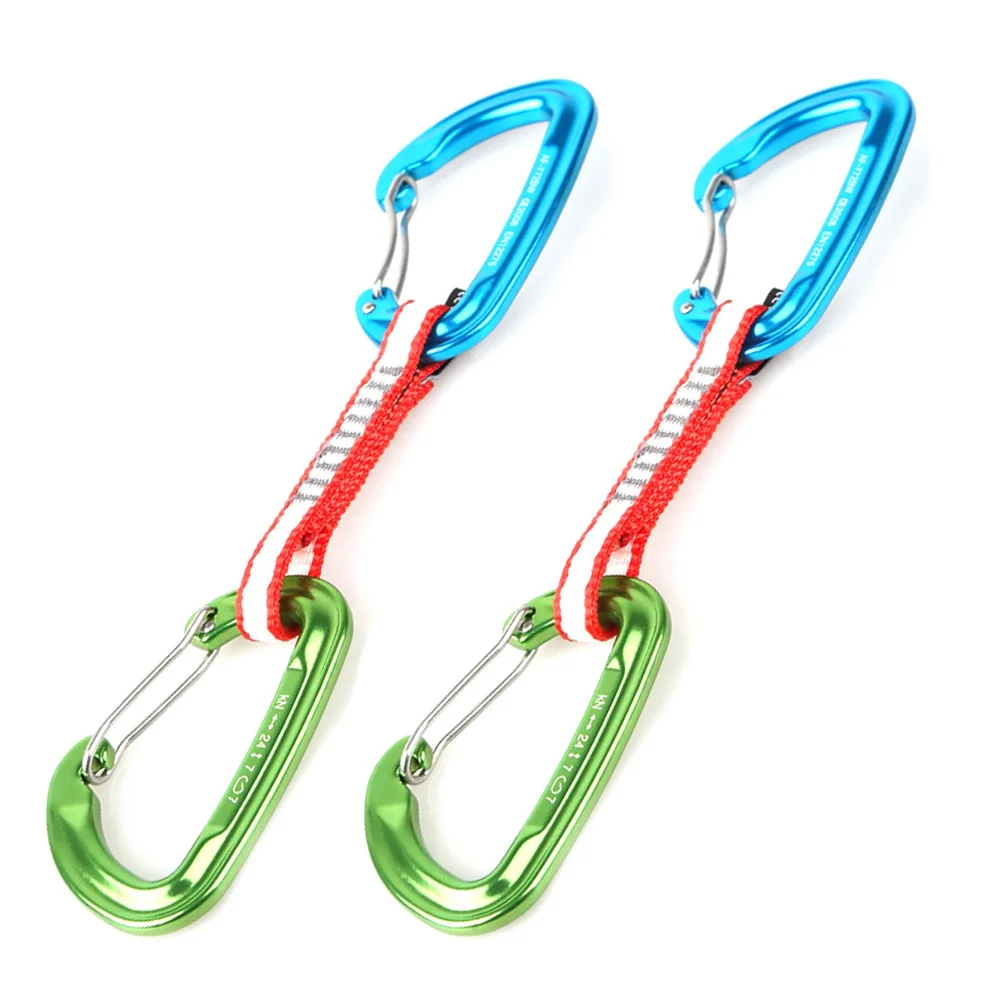

For most sport climbing, you just want the short bones, but if you do any multi-pitch or trad climbing you may want the longer ‘alpine draws.’ The slings also come in different widths and materials, which usually have differing strengths, as well as weights. They make different lengths of dogbones for quickdraws. You can read the results of their study in this article. At first glance it would appear that a wiregate is much more flimsy and potentially more dangerous than a solid gate biner, but they’re actually about the same.īlack Diamond compared the minor axis breaking points (see minor axis info below) between the two types of carabiners and found that they were equivalent, and sometimes wire gate carabiners even held out longer because the gate bent instead of broke flat out. If your quickdraw has both, the solid gate goes against the bolt and the wire gate is for the rope. The reason for this is to be able to more easily snag the rope when you’re clinging to the rock for dear life.Īnother feature that you’ll see on quickdraw gates is solid gates versus wire gates. The straight gate is designed to go into the bolt on the cliff, whereas the concave gate is designed for the rope. Usually, one gate is concave, and one is straight. Take a look at a quickdraw and you’ll notice that each gate (the part that opens and closes) is shaped differently. See below for information on wear and tear, and how often quickdraws should be replaced. The carabiners are actually the ‘weak link’ in the quickdraw initially, but the slings wear out more quickly over time. Climbing gear, slings and ropes especially, wears out over time. It’s important to realize that the ratings shown on climbing gear are the strength factors the gear has when brand new. The CE / UIAA requirements for the dogbone (sling between the two carabiners) are 22kN when new, and the requirements for a carabiner (major axis load) are 20kN. Still, even with the gravity factor, climbing gear is rated well above what climbers really need.Ī quickdraw is as strong as its weakest link- which is actually the carabiners in a brand new quickdraw.

The strength required to catch a falling climber is around ten times the weight of the climber due to the acceleration due to gravity of 9.8m/s^2. The physics equation of Force=mass*gravity yields the actual strength requirements for a quickdraw catching a lead fall. Just because a carabiner in a quickdraw can hold the weight of 25 people doesn’t mean you should try it. Regular Quick Draw How Strong are Quickdraws? The other concern is the wear and tear on the quickdraw over time.

Dynamic forces add a significant amount of force to the system, which increases the safety requirements. While you could hang a car from a quickdraw and it would hold the weight, it couldn’t do so if you dropped or bounced a car on the quickdraw. The huge caveat here though is that climbing gear is rated for FORCE, not for WEIGHT. It’s important to understand how the sling and non-locking carabiners affect the weight and strength factors of quickdraws.Ī quickdraw, when loaded properly, is rated to hold up to 20N (about 4500 lbs or 2000kg), the strength rating of the carabiner’s major axis. We tend to trust metal hardware a lot more than gear made of nylon and other rope materials. Quickdraws are comprised of two metal carabiners with a sling ( dogbone) connecting them. If you ask a climber though, we usually offer some explanation about how a carabiner can hold up a truck, and that they never break when used correctly, and we always use them correctly (because we’re climbers). To non-climbers, climbing gear is incredibly suspect.


 0 kommentar(er)
0 kommentar(er)
